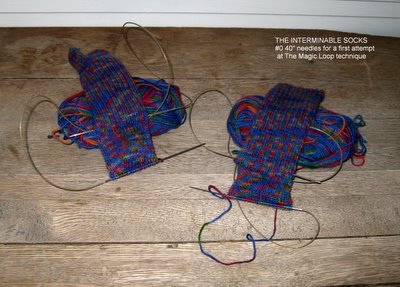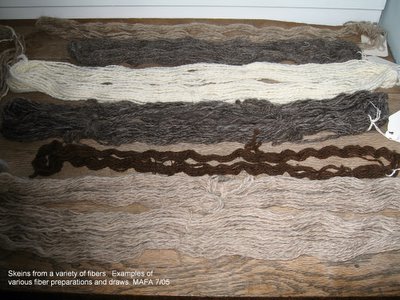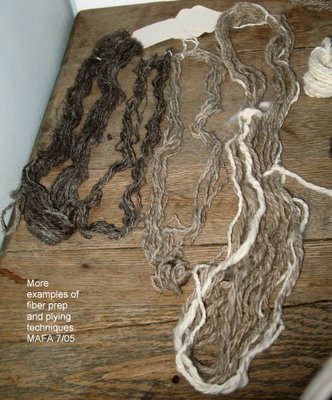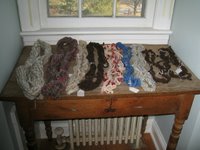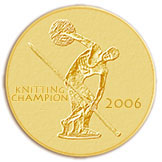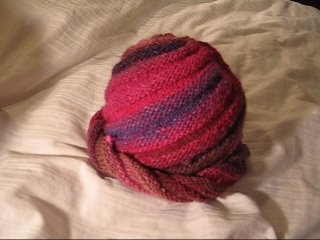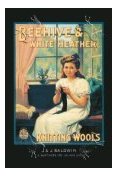Have you ever had the experience of being the slow learner in a class? Well, I did but have absolutely no shame or regrets.
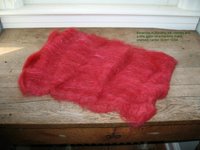
Robin Russo taught the 3 1/2 day exhaustingly intense fiber prep workshop at SOAR in October 2004. It is one of the best and most rewarding classes/courses I have ever taken. The amount of material covered was just staggering. Throughout this blog there are skeins produced either in the class or with fiber prepared in that class and spun later. See the NCS Dye Pot Day posting.
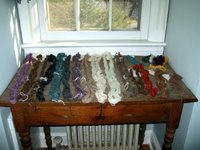
Key to the table of fibers
First group: Long skeins from left:
1. English combed Polwarth carded with purple mohair
2. Icelandic - English combed
3. Icelandic - hand combed (spun 9/05)
4. Shetland - hand combed (spun 9/05)
5. Romney -- blended on hand combs with mohair (spun 9/05)
6. Shetland - machine carded
7. Purple Romney and grey angora - machine carded to blend
8. Mystery cross with alpaca - blended with hand combs
9. Alpaca - hand combed (spun 9/05)
10. Polwarth - English combed (spun 9/05)
11. Border Leicester - hand combed (spun 9/05)
Shorter skeins
12. Icelandic - machine carded
13. Romney - spun from the lock
14. Llama - English combed with guard hair removed
15. Llama - hand combed - some guard hair remains
Top right:
16. Romney - various colors - hand combed and worsted spun
17. Lt. Blue Angora and cormo - hand combed to blend(spun 9/05)
I'd only been spinning for two years and sporadically at that. At that time I had only one spinning wheel and it lived in New Jersey where I spend all the free time I can. So, I was the typical annoying dumb girl in class. You guessed it -- my wheel squeaked. I'd been told that Louets don't need any oil so, naturally, I didn't have any. Finally one wise woman, who'd spent her career teaching high school Englih, simply walked over and oiled my infernally squawking wheel. Clara showed me how to do Andean plying. Others demonstrated carding. And, the class went on at the pace of the more advanced students so I didn't have to be worried about holding anyone back. Just in case you ever think of attending, the people at SOAR were really great. Everyone makes fiber friends and has a chance to spend time with all the faculty.

Although I really couldn't keep up with the class, it was blissful fiber overload to store away for later.






